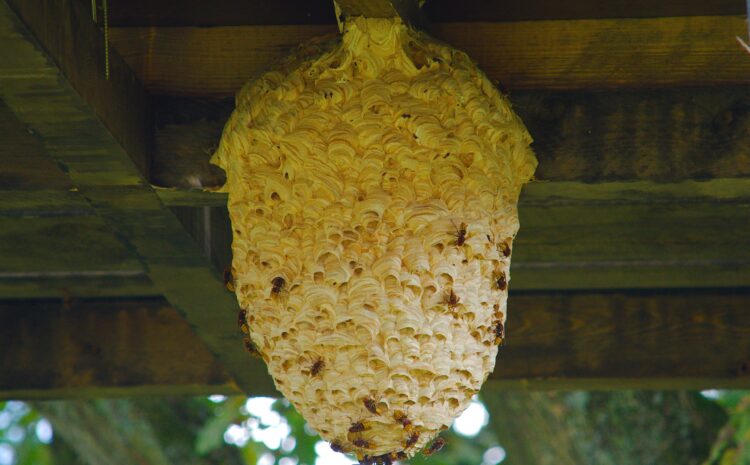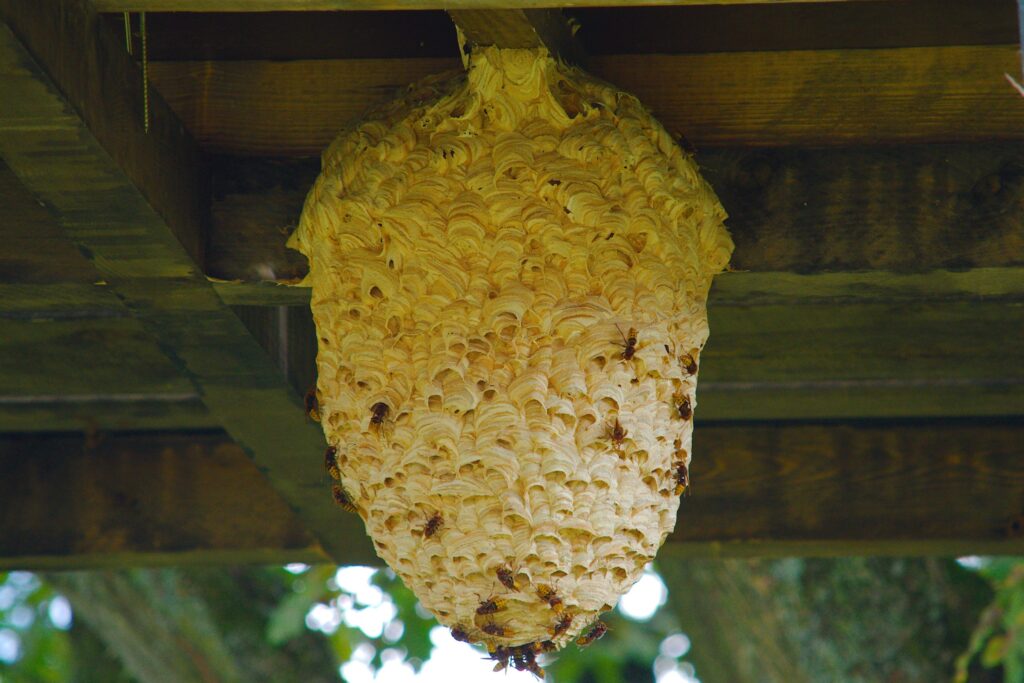
Preventing and Removing Wasps from Your Home
Preventing and Removing Wasps from Your Home

When it comes to summertime, one of the worst things that can occur to your backyard is a wasp nest. While wasps are not necessarily dangerous, except for those allergic to their stings, they can ruin outdoor activities. Not to worry, though; there are ways of removing the hostile takeover of your backyard! Below are steps which, if followed correctly, should remove the current wasp issue, and prevent a future one from occurring.
The Strategy
Before marching outside to face the invaders head on, it would be wise to devise a plan.
1. Ensure You are not Allergic
- Scheduling a visit with a doctor to test your allergic reaction to a wasp sting could go as far as saving your life. Nothing could ruin the attempted removal of the wasp nest faster than an allergic reaction.
2. Learn the Species of Wasp
- This is perhaps one of the most important steps. Learning the species will greatly assist you in the removal and prevention! Paper wasps, yellow jackets, and hornets are the three main types of wasps.
- Paper Wasps: These types of wasps have long, skinny bodies and legs. Their nests are known to be large and are often built in easily visible areas, usually under the eaves of the house, or near the ends of the open pipe. They are usually non-hostile unless provoked, and it would be wise to keep your distance as their stings are known to pack a punch.
- Yellow Jackets: Easily distinguishable from paper wasps, yellow jackets have a thick black antenna. They tend to build paper-like nests in enclosed spaces such as holes in walls and the ground. Take extreme caution when dealing with yellow jackets as they are quick to anger and attack in swarms.
- Hornets: The largest of the listed, Hornets, more specifically, the bald-faced hornet, the most common species in North America, is one of the most aggressive wasps. Take extreme caution when dealing with these types of wasps as their stings are known to be severely painful. Hornets tend to build their nests in wall openings and tree trunks.
3. Protection
- Since the residents of the nest you will be attacking are going to be less than delighted with the idea, it would be wise to invest in protection for your skin and especially your face. We will not go as far as to suggest you purchase a beekeeper suit but wearing thick clothing would be the next best thing. Furthermore, wear goggles to protect your eyes.
4. Have an Escape Plan
- Once again, since you are going to be disturbing an entire nest full of wasps, if things do not go exactly according to plan, it would be wise to have a route planned out for your escape.
5. Attacking at Dawn or the Night Raid?
- When it comes down to finally attacking the nest, attacking either early in the morning or late at night is best. During these periods, wasps are generally less active, slower to react, and less aggressive.
- If you opt to attack at night, do not use a standard flashlight. The brightness will attract wasps towards you. Use a flashlight with a red or amber tint instead.
- Attempting removal during the early morning is also viable and can be better for those who would like more visibility.
6. Choosing the Correct Tool
- When attacking wasps, it is vital to choose the right tool for the job.
- Pesticide Spray: Using pesticide spray meant for wasps is a good way of disposing of nests hanging on house or trees.
- Insecticide Dust: When dealing with nests found in the ground, insecticide dust is the perfect way to destroy the nest.
- Dish Soap: For those looking for a more natural way of dealing with the issue, dish soap works well. This method, while not as effective as pesticides and insecticides, is still effective at killing wasps.
Prevention
Now that the nest has been taken care of, it is essential to begin taking preventative measures to ensure the same does not happen again.
- Remove Nesting Areas: Over the winter, inspect the outside of your house to ensure that any nesting areas are closed off. These areas could be loose siding, cracks near windows and door frames, and unsealed vents.
- Dispose of Vacant Nests: If you have yet to dispose of the nest, over winter would be the best time to do so. While wasps rarely, if ever, reclaim old nests, others will often build on top of or over old ones.
- Seal Off Garbage Cans: Ensure your garbage cans are entirely sealed closed. Old or rotting food can attract wasps, not to mention a plethora of other pests.
- Fake Nests: Since wasps are extremely territorial, hanging a fake nest is a great deterrent.
Following these steps will ensure that you can eliminate your wasp issue. However, if any of the methods worry you, or you wish for the issue to be taken care of professionally, call Accurate Pest Control! We are experts when it comes to wasp elimination and uses only the most efficient and safe methods of extermination! Call us today for a free inspection!
